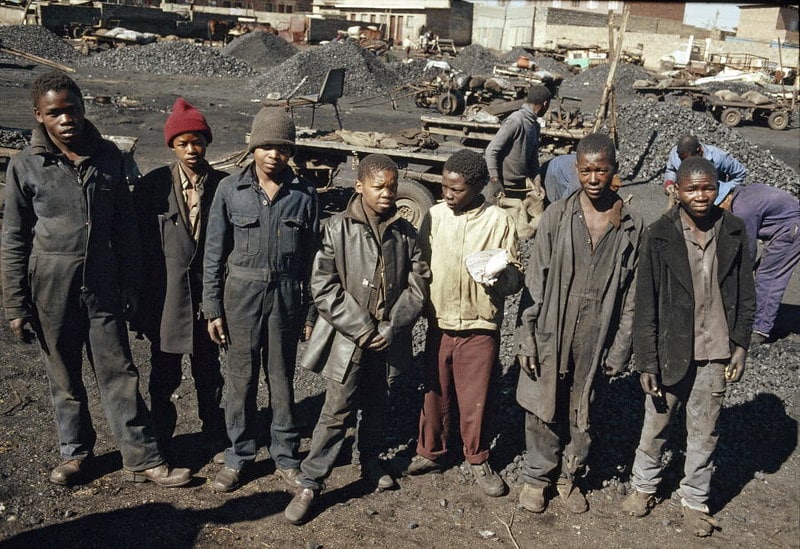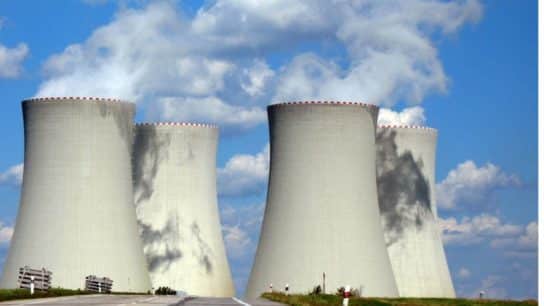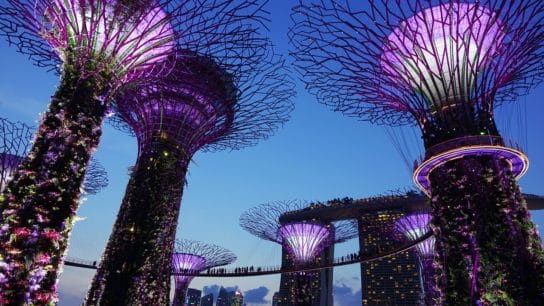Last year, South Africa approved a goal for the country to reduce greenhouse gas emissions to net-zero by 2050. An ambitious goal, certainly, but what takes it to the realms of the unimaginable is that the country still plans to burn coal on this date, also emphasising that the transition away from coal must be “just.” As part of our series on reaching net-zero emissions, we are taking a look at South Africa, analysing and evaluating its climate goals in an ever-warming world, specifically looking at renewable energy, pollution in the country, financial burdens, and government and infrastructure woes.
—
In announcing its net-zero emissions goal, the government of South Africa unveiled its “low emission development strategy (LEDS),” which it called “the beginning of our journey towards ultimately reaching a net-zero economy by 2050.”
The strategy is a response to the Paris Agreement’s call for countries to set out long-term climate strategies, drawing together existing policies, planning and research across economic sectors. Among these is the integrated Resource Plan (IRP), which is how South Africa plans its electricity supply. The 2019 version of the IRP outlines a shift from coal to renewable sources, however 5 000 MW of coal power capacity is forecast to still be operating in 2050- new coal power stations are under construction in Kusile and Medupi, with another 1 000 MW expected to come into operation by 2030.
Between 2000 and 2015, the country’s emissions rose by 20% to the equivalent of 512 million tonnes of carbon dioxide from 426 million, the government said in a 2019 report to UN Climate Change.
It said that emissions would have been 631 million without efforts to mitigate emissions. In its climate plan dubbed “peak, plateau and decline,” South Africa foresees emissions between 396 and 614 million tonnes of carbon dioxide from 2025-2030.
In a spot of good news however, plants in Khanyisa and Thabametsi were planned but there are now doubts as to whether they will go ahead after Khanyisa’s water license was taken away by a South African court.
You might also like: The Cost of Subsidising Fossil Fuels

Young coal miners in South Africa, 1988 (Source: UN).
Currently, more than 90% of South Africa’s energy is generated from coal, mainly mined and burned in the country’s north-east by state-owned utility provider Eskom. The government wants to reduce this figure to 45% by 2030 and plans to shut down and repurpose some older coal power stations to achieve this, in addition to investing in renewable energy; the LEDS says that South Africa has “favourable conditions for wind power” and is “ideal for solar power.”
However, as the coal industry employs many people in South Africa- around 92 000– and earned the country R139 billion (USD$9.6 billion) in 2019, the government has emphasised the importance of a “just transition” to clean energy, finding miners alternative employment. However, trade unions in South Africa, many of whose members work in coal mining and in Eskom, don’t like the Independent Power Project approach being used to develop renewable energy as it’s all private-sector led. They fear that their jobs will be replaced by less well-paid and less secure employment. As unemployment approaches 30% in the country, this is a valid concern.
Eskom is trying to ease these fears. Mandy Rambharos, Eskom’s head of just energy transition, says “We can’t be irresponsible. As we are shutting down plants, how do we replace that so that we have the electricity options still but also ensure that we’re not impeding on socio-economic development?”
The government is trying to get renewables built by private companies through its Renewable Energy Independent Power Producer (REIPP) scheme, which has so far mobilised over USD$15bn of investment. This is important, as Eskom’s ability to invest itself is hampered by its debt levels of around R480 billion ($29 billion), however it has plans to convert some plants into renewable energy facilities, install gas turbines and create industrial zones.
However, Secretary of the Climate Justice Coalition Alex Lenferna said that while the scheme had taken off between 2014 and 2016, there had been no bids and no large-scale renewables projects since then, calling the country’s renewables policies “a shambles.” He adds that renewable energy is being artificially capped “in order to force in new coal, more gas and also try to get nuclear into the mix. So we’re pushing for more expensive energy so we can support coal rather than embracing low-cost renewable energy.
The Need to Divest From Coal
A 2019 report from the Institute for Energy Economics and Financial Analysis (IEEFA) warned that new energy technologies will replace coal-fired power faster than predicted.
Eskom and Sasol, which together mine nearly two thirds of the 250 million tonnes of coal produced by South African mines each year, are planning to curb their use of the fossil fuel.
Further, major coal importers like India, Pakistan and South Korea- which together account for more than half of South Africa’s coal exports- are either transitioning away from coal or have limited growth potential. Meanwhile, wind and solar power are rapidly becoming the cheapest source of new generation in many countries and will be cheaper than coal or gas-fired plants by 2030- wind and solar power is 40% cheaper than output from new coal plants in South Africa, according to research from The Council for Scientific and Industrial Research.
Additionally, three major banks in South Africa- Nedbank, Standard Bank and FirstRand- have all indicated they will not finance the two planned projects in Thabametsi or Khanyisa, further putting them at risk. Many of Eskom’s old coal-fired power plants are already in “cold storage,” unlikely to ever come into service again.

A map showing the coal plants in South Africa (Source: Earth.Org).
Water Worries
Last year, South Africa tightened environmental demands for new coal-fired power plants, in a little-noticed ruling that ordered that licenses for water use should consider the risks of climate change.
In the landmark ruling, the nation’s Water Tribunal in Pretoria upheld an appeal by environmental campaigners to scrap two water use licences granted in 2017 by the Department of Water Affairs and Sanitation to Saudi Arabia’s ACWA Power for the development of the 600MW capacity Khanisa coal-fired power station.
South Africa’s water supplies are becoming more tenuous, as is the case in many countries around the world as global warming is projected to lead to increased droughts and stress on water supplies- in January 2018, officials in Cape Town warned that the city was three months away from running out of water. Labelled “Day Zero” by local officials and brought on by three consecutive years of poor rainfall, April 12, 2018, was to be the date of the largest drought-induced municipal water failure in modern history. Thankfully, it managed to avoid Day Zero, but worries remain.
In South Africa, coal power requires enormous volumes of water. Coal mining and power generation together consume 5% of South Africa’s water. Further, the electricity sector pays far less for water (approximately R3.40/m3) than the average household (approximately R8/m3). This means there is no incentive to prioritise water-efficient supply options and with water supplies as fluctuating as that of South Africa’s, such incentives are vital.
Pollution: The Highveld Region
The Highveld region in the province of Mpumalanga has about half of the country’s recoverable reserves and some of South Africa’s most polluted air. The region is home to 12 coal-fired power plants and a refinery that produces liquid petroleum from coal, the latter of which produces more greenhouse gas emissions than entire countries like Norway or Portugal.
Residents of the town often develop asthma, bronchitis or lung cancer as a result of the coal mines, coal-fired power plants, petrochemical facilities, metal smelters, chemical producers and other industrial complexes that riddle the region.
Researchers estimate that heightened air pollution levels in the region cause hundreds of early deaths every year. A 2019 Greenpeace report ranked the region among the highest in the world for emissions of sulfur dioxide and nitrogen dioxide, two dangerous pollutants.
At the time of publication, residents of Gauteng, a province nearly 300km away from Mpumalanga, have reported a strong sulphur smell in the air, followed by complaints of breathing problems, burned eyes, blocked noses and bad chests. The South African Weather Service issued an alert advising that air quality was “unhealthy” for sensitive groups, including children, the elderly, asthmatics, people with lung and heart disease. It has been revealed that the source of the smell is likely Sasol’s Synfuels facility in Secunda, Mpumalanga, giving Gauteng residents a small taste of what life is like for people who live in Mpumalanga.
In 2019, environmental groups, including groundWork and the Vukani Environmental Movement, filed lawsuits against the South African government for its failure to clean up the air pollution, arguing that it violates the residents’ constitutional right to “an environment that is not harmful to their health and wellbeing.” The case will be heard in May and is the first court case in South Africa to challenge air pollution on the basis of this constitutional right, but will likely not be the last.
The Highveld’s poor air quality is a problem that the South African government has recognised for more than a decade. In 2007, the government classified a 30 000 sq km portion of the region as an air pollution hotspot and priority area that required special air quality action. In 2012, the government published an air quality management plan that outlined goals to bring air quality into compliance with national standards by 2020. However, little progress has been seen and the majority of the set goals haven’t been achieved.
Air pollution in the Highveld regularly exceeds South Africa’s national air quality standards. In 2008, particulate matter sized 2.5 microns or less exceeded air quality standards on at least 103 days. These particles can get into the lungs and bloodstream, causing a variety of illnesses, including cardiovascular disease and cancer. Because the country’s air quality standards are weaker than those of the WHO, these extreme levels present a significant health hazard.
Further, a 2019 analysis estimated that, at their peak, sulfur dioxide and nitrogen dioxide levels in the Highveld’s industrial region are 10 times higher than the WHO considers safe for human health.
However, despite these analyses, air quality monitoring is lacking; many of the region’s monitoring stations are not functional, meaning that without accurate data on the region, air pollution is likely worse than predicted.
groundWork says that the ongoing pollution in the Highveld is linked to industrial activity that benefits the country’s elites; close ties between members of the ruling party of South Africa- the African National Congress- and the coal sector have perpetuated the dirty substance’s dominance in the energy mix, enriching a few to the detriment of many. The first half of the 20th century saw Eskom use coal to provide low-cost electricity to gold and diamond mining operations. Additionally, during the apartheid era, the government built more coal-fired power plants and created Sasol to turn coal into fuel.
Today, the government allows some of the region’s biggest polluters to dodge compliance with emissions limits. In 2013, Eskom applied to postpone compliance at 11 coal-fired power plants in the Highveld, which the government largely granted. Eskom was also involved in former President Jacob Zuma’s corrupt use of public enterprises. Further, in 2015, while Zuma was in office, the utility awarded a lucrative contract to a mining company owned by his son and his wealthiest supporters, the Gupta family, despite its low quality coal. Eskom continues to submit additional applications to postpone, suspend or alter emissions limits at some of its plants, which are being reviewed. From April 2016 to December 2017, Eskom exceeded its emissions limits for particulate matter, sulfur dioxide and nitrogen oxides more than 3 000 times, according to an analysis by the Centre for Environmental Rights.
A recently released report, called the PWC Net Zero Economy Index, found that South Africa has been ranked the worst G20 country performer in terms of carbon intensity, followed by China. While carbon intensity fell by 2.4% globally in 2019, South Africa recorded a 1.3% increase in carbon intensity for the second consecutive year. Shockingly, the country also saw the lowest economic output in terms of GDP per ton of CO that it emits, across the economy.
The report added that in order to meet the 2°C temperature increase goal as outlined by the Paris Agreement, South Africa will need to cut its emissions by between 60 and 75% by 2050. Approximately $700 billion (R10.4 trillion) in investment will be required to achieve this scenario. In unmitigated scenarios, it is predicted that by 2035, the country could see warming of between 0.5 and 1°C across most parts of the country with parts of the western interior seeing rises of 2°.
Challenges to Net-Zero Emissions Goals in South Africa
As mentioned above, decommissioning coal mines is essential to South Africa meeting its net-zero emissions goals, but doing so puts tens of thousands of jobs at risk. This would be devastating for the country’s already frail economy that in 2019, reported GDP growth of just 0.153%. This precarious scenario has prompted the government and industry to sign on to a concept of a “just energy transition”- an attempt to create new employment opportunities and win public approval for the impending change.
According to Climate Action Tracker, which provides independent scientific analysis, South Africa’s current plans are still “highly insufficient” to help meet global climate goals. It has also yet to submit updated NDCs ahead of the COP26 summit in Glasgow in November.
Infrastructure Woes
In an example of the lack of coordination in South Africa over the energy switch to reach its net-zero emissions goals, Sasol’s Secunda plant in Mpumalanga turns coal into gasoline and petrochemicals. While Sasol aims to use more power from clean energy and eventually switch to natural gas in the 2030s then ultimately hydrogen, South Africa has little gas infrastructure in the form of pipelines or liquefied natural gas terminals.
Political Will
In South Africa, as in many other countries, the political will to shift away from coal can be difficult to muster because of the need to secure jobs, or suffer less votes in elections in democracies.
An example of this is Poland. Last year, the government saw swift backlash from the coal-producing region of Silesia by negotiating a deal with unions to divest from coal entirely by 2049. Prime Minister Mateusz Morawiecki justified the move saying the energy transition was inevitable. “What we want is for this process to be just,” he said.
Spain is an example of how to do this right. In 2018, its government struck a deal with the miners’ union that would see an investment of 250 million euros ($303 million) go to the affected regions over the next 10 years.
Another political challenge posed by this transition is seen in India. Formulating its own target to achieve carbon neutrality would require an overhaul of its development aims to put climate change on a par with infrastructure building, which would require institutional changes. According to Ajay Mathur, chairman of the Energy Research Institute in New Delhi. “institutional changes take time because you need to address concerns of those who lose.”
Further, mine unions and mining have always been an important consideration to the ruling African National Congress (ANC) party. President Cyril Ramaphosa founded the National Union of Mineworkers, the biggest union at Eskom, while Minerals & Energy Minister Gwede Mantashe is a former secretary general of the union who once headed a branch of the organisation in the coal belt. Both rely on labour support to keep them in power, and Mpumalanga’s municipal councils and provincial government are firmly in the hands of the ANC.
Troublingly, while Ramaphosa regularly touts the potential and importance of renewables, Mantashe stresses that a just move to net-zero emissions must be gradual and that a significant role should be maintained for nuclear and “clean coal,” which would mean investing in technologies to use coal without the carbon impact.
It’s clear that despite the country’s net-zero emissions goals, coal will play the dominant role in the energy mix in South Africa until at least 2030, and as long as infrastructure and political considerations are involved, making the shift to renewable energy will be very difficult for the country. Nevertheless, it is crucial that South Africa do so as it would be catastrophic for the country’s residents and economy if no alternative energy sources are implemented, especially as coal’s popularity and availability dwindles.
Featured image by: Flickr

















